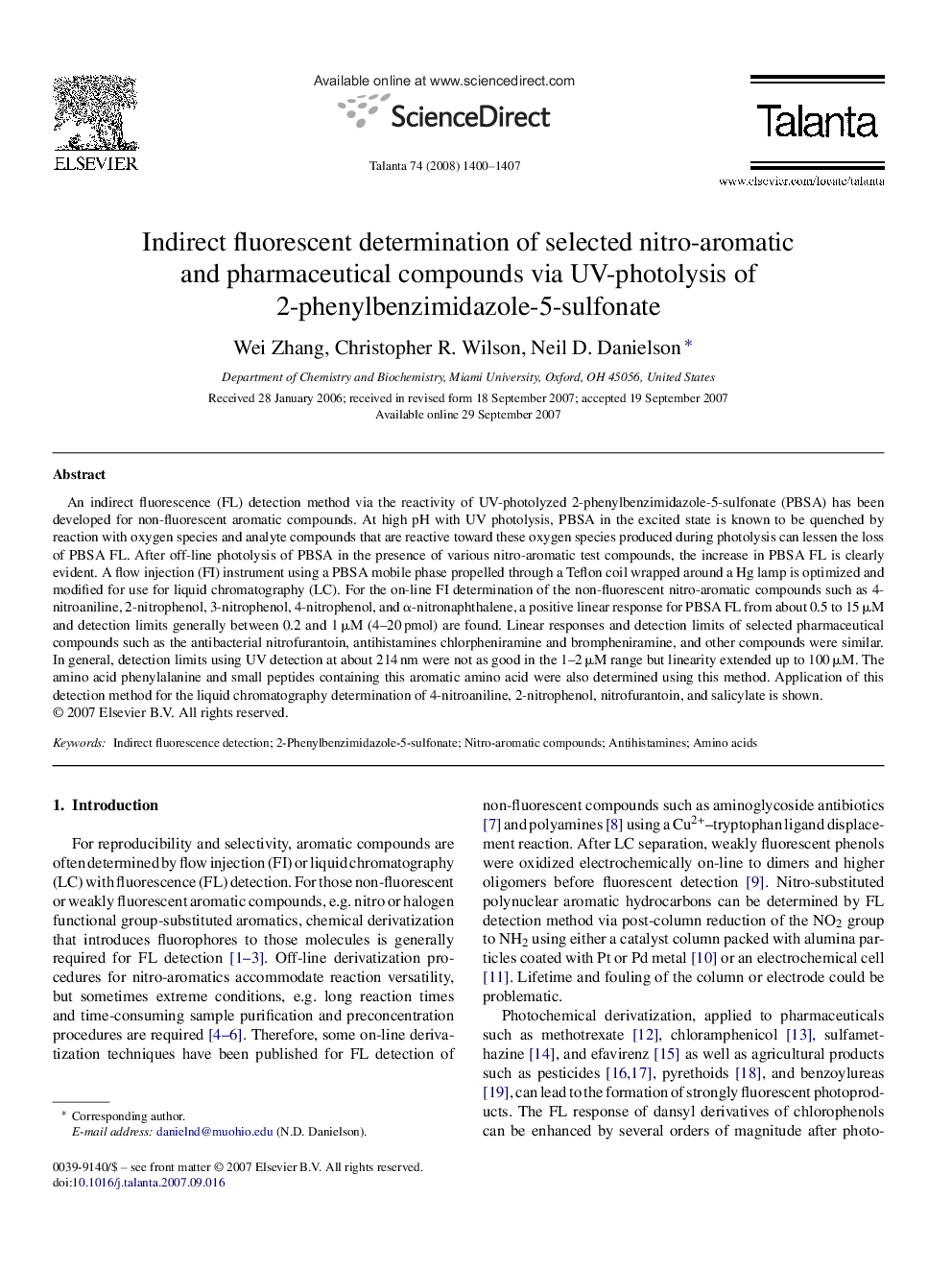| Article ID | Journal | Published Year | Pages | File Type |
|---|---|---|---|---|
| 1244533 | Talanta | 2008 | 8 Pages |
An indirect fluorescence (FL) detection method via the reactivity of UV-photolyzed 2-phenylbenzimidazole-5-sulfonate (PBSA) has been developed for non-fluorescent aromatic compounds. At high pH with UV photolysis, PBSA in the excited state is known to be quenched by reaction with oxygen species and analyte compounds that are reactive toward these oxygen species produced during photolysis can lessen the loss of PBSA FL. After off-line photolysis of PBSA in the presence of various nitro-aromatic test compounds, the increase in PBSA FL is clearly evident. A flow injection (FI) instrument using a PBSA mobile phase propelled through a Teflon coil wrapped around a Hg lamp is optimized and modified for use for liquid chromatography (LC). For the on-line FI determination of the non-fluorescent nitro-aromatic compounds such as 4-nitroaniline, 2-nitrophenol, 3-nitrophenol, 4-nitrophenol, and α-nitronaphthalene, a positive linear response for PBSA FL from about 0.5 to 15 μM and detection limits generally between 0.2 and 1 μM (4–20 pmol) are found. Linear responses and detection limits of selected pharmaceutical compounds such as the antibacterial nitrofurantoin, antihistamines chlorpheniramine and brompheniramine, and other compounds were similar. In general, detection limits using UV detection at about 214 nm were not as good in the 1–2 μM range but linearity extended up to 100 μM. The amino acid phenylalanine and small peptides containing this aromatic amino acid were also determined using this method. Application of this detection method for the liquid chromatography determination of 4-nitroaniline, 2-nitrophenol, nitrofurantoin, and salicylate is shown.
